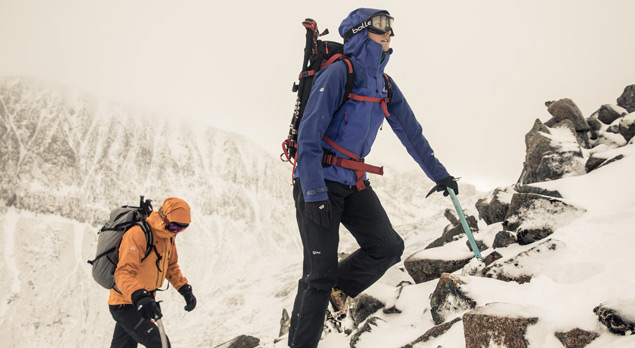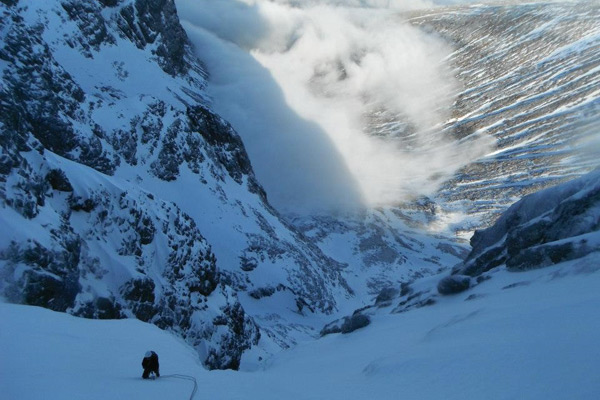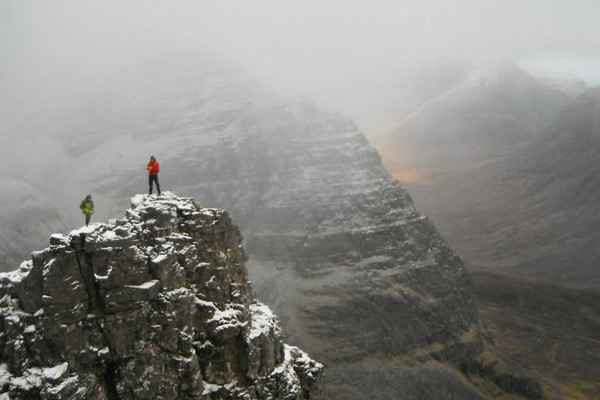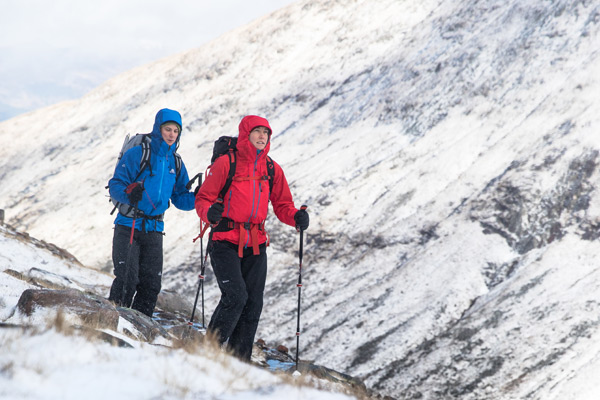Beginners Guide To Winter Mountaineering

Are you a hill walker who is drawn to the mystic world of winter mountaineering? The idea of moving around winter landscapes is completely inspiring and a brilliant way to get outside during the short winter days. With the right approach and the right kit , days out in the mountains during winter can be some of the most rewarding and memorable days of your life.
This article aims to help the aspiring winter mountaineer understand the variety of styles on offer and to help increase the chances of a successful day out. Sometimes conditions will not be suitable; it is important to learn how to identify conditions early so you can come up with alternative route options.
Types of Winter Mountaineering
Gullies

Ascending gullies in winter conditions can be thrilling. They are graded by difficulty; grade I usually offers more straightforward snow slopes up to a 50° angle while grade II will have steeper sections with ice. Grade III and anything above is for more advanced climbers and will require commitment to long sections of steep climbing.
Ridges

Wintry ridges can offer thrill seekers something special. The exposure can be exhilarating and the requirement to ensure you have great foot placement can really get the heart racing. On bluebird days the views on offer will likely be nothing less than incredible. The grading is similar to that of gullies, grade I being less technical moving up to grade III and above which require a much higher level of fitness and skill.
Choosing A Winter Route

When choosing a route to test your winter skills there are lots of factors to consider: logistics, approach, weather, avalanche risk, difficulty and how well protected the route is.
- For logistics it is always best to work out how many hours of daylight you have and how long you expect the journey to take you. If it requires more time than daylight hours, it is better to start early in the morning, during winter this will mean setting off before sunrise.
- If you are out in the dark, it is worth knowing the route on the map well and keeping a close eye on the navigation as well as having a quality headtorch with plenty of power.
- It is extremely important to find out what the weather forecast and avalanche risk is. Keep in mind where the wind may have deposited fresh powder as well as the freeze/thaw cycle for a few days prior to your trip so you know if your route is crossing on to any potentially dangerous slopes.
- The difficulty will be reflected in the grade it has been given so it’s important to be prepared for what your intended route is. The kind of day you have will largely depend on the weather conditions and preparation along with your attitude, ability and experience.
If you are completely new to winter conditions in the great outdoors, starting with easier ridges and gullies will break you in well. It is important to know when a ridge will be good and when a gully will be good, because when either is out of condition it can have dangerous consequences. It is also important to understand grading and difficulties before venturing into the mountains.
Once you have opened the door to winter mountaineering it's likely you'll never look back. Getting out in summer, whether walking or climbing, is fantastic and vital in order to build upon your skills and experience, but there is something about advancing to winter conditions that offers a little extra magic to a day out in the mountains. Although it's important to be well prepared and sensible about how far to push your abilities, its also important to remember that everyone has to start somewhere. Glenmore Lodge offers a great range of winter skills courses to help get you started.
 |
About the Author:Charlotte Fish - Outdoor ExpertCharlotte discovered her passion for the outdoors in her early teens and has never looked back since. Her pursuit of outdoor activities has taken her all over the world but she truly believes there is no place like home. |






